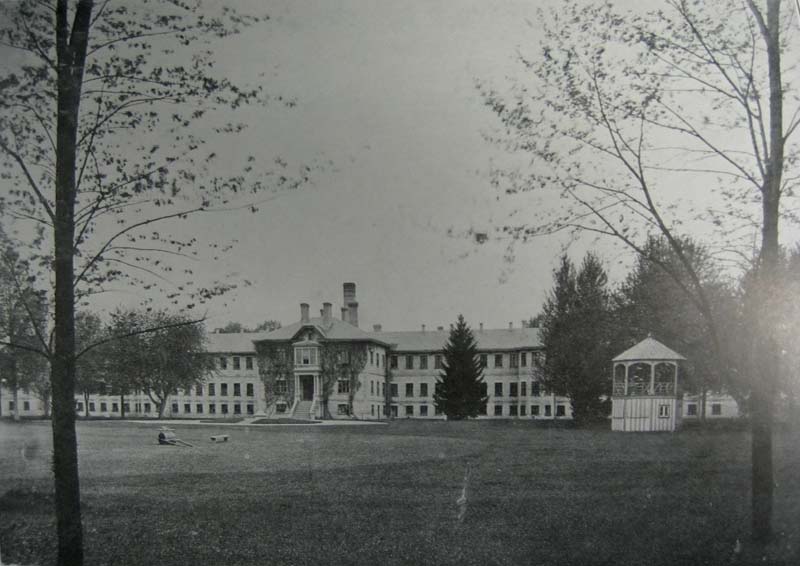The North Building

The North Building, circa 1910. Ontario Provincial Asylum Report, Ontario Sessional Papers, 1911.
1 |
2 |
3
Introduction | The Main Building |
The Cottages
The Medical Examination Building |
The North Building
Patients now recognized as developmentally challenged were labelled "idiots" during the Victorian period. These patients were diagnosed as having a permanent condition, usually from birth. They often lacked the ability to fully care for themselves, and required more constant attention. These individuals were segregated in a special branch of the Asylum called the Idiot Branch. In this branch, soon known as the Refractory Branch and later referred to as the North Building, patients received more specialized care.
When it opened in 1871, the branch held only 36 patients. After the Orillia Asylum for Idiots was opened in 1879, the Branch was enlarged to house patients who were thought to be disorderly and disruptive. For their protection, and to keep them separated from the other Asylum patients, the Branch was isolated from the main building and located in one of the asylum's orchards. Patients in this building were most likely confined to locked wards, and would not have had unsupervised access to the grounds or to other leisure spaces in the main building. The building did offer closed-in balconies, where patients could get fresh air, and sitting rooms. A new fountain was added to the building's courtyard in 1888 to make it a more attractive space.
While these patients required constant care, Dr. R. Maurice Bucke believed that like all patients at the Asylum, they would benefit from moral therapy. Like the other residents, the patients engaged in activities such as exercise, prayer, chores and entertainment. The provincial inspector noticed a very positive improvement in the patients' behaviour when he visited in 1883. He believed that the patients in this Branch who were now occupied with work, such as sewing, were more quiet and content than before. This may have been true for some, but it was unlikely that most patients in this building were able or willing to work and it is not known how successful moral therapy was for these patients.